The Economics and Statistics Division maintains archives of previous publications for accountability purposes, but makes no updates to keep these documents current with the latest data revisions from Statistics Canada. As a result, information in older documents may not be accurate. Please exercise caution when referring to older documents. For the latest information and historical data, please contact the individual listed to the right.
<--- Return to Archive
For additional information relating to this article, please contact:
September 17, 2014STATISTICS CANADA POPULATION PROJECTIONS, 2013-2038 Statistics Canada has updated its population projections for Canada (to 2063) and the Provinces and Territories (to 2038). Projections include several scenarios based on both short and long term component trends, providing a variety of potential outcomes. The model is component based cohort model which takes into account births, deaths, and migration trends. Note that the figures presented are projections based on reasonable assumptions, and not predictions of the future.
NOVA SCOTIA
From the seven scenarios presented in the projections, Nova Scotia's population would reach levels ranging from 884,800 (Low Growth Scenario) to 993,300 (High Growth Scenario). Depending on the assumptions embedded in the Medium Growth Scenarios (some use short term trends, others use longer trends), population could reach between 881,200 (M4: 2004-2008 trends) to 965,900 (M5: 2009-2011 trends).
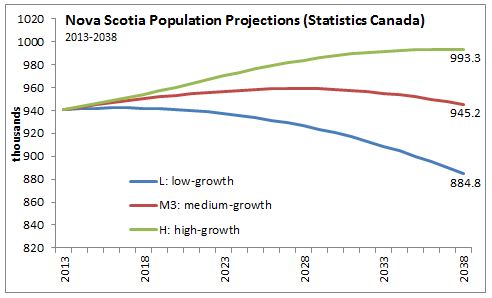
These projections bear out several trends in the Nova Scotia demographic situation: An aging population, and an eventual decline in the population. In the scenarios above, we see an eventual peaking of the population before the start of a declining trend. Age cohorts continue along the trend already established: the Baby Boom cohort becomes a larger proportion of the population, with lower replacement in the youth cohort. As shown in the Low Growth and High Growth Scenarios below, the population aged 0-17 may make up as little as 15%-17% of the population, while the 65 and over cohort could be almost a third of the population, leaving the 18-64 aged group declining from 65% of the population today to 52-54% in 2038.

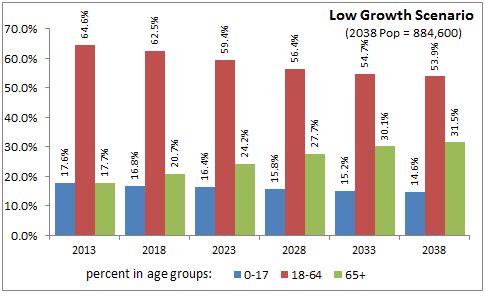
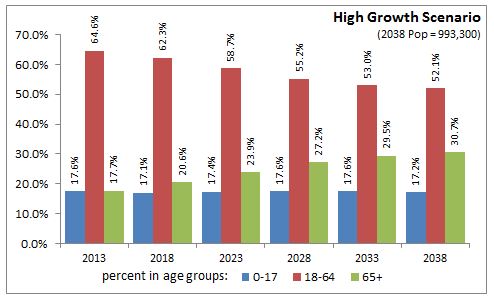
Under all scenarios, these trends remain constant. Under all scenarios, the population in Nova Scotia of prime working age (18-64) and youth (0-17) will decline over the forecast period (though some scenarios have recovery in 0-17). In all scenarios, the number of seniors rises by at least 100,000 to over 270,000.
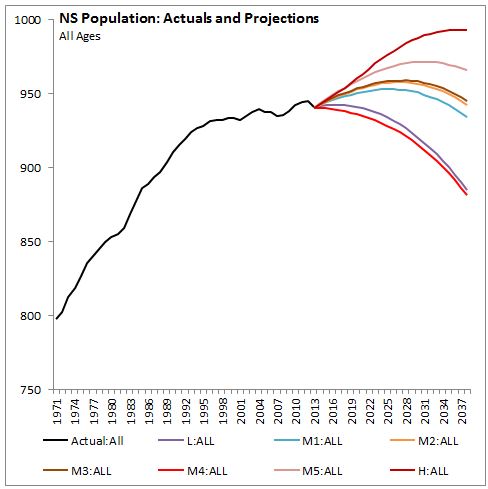
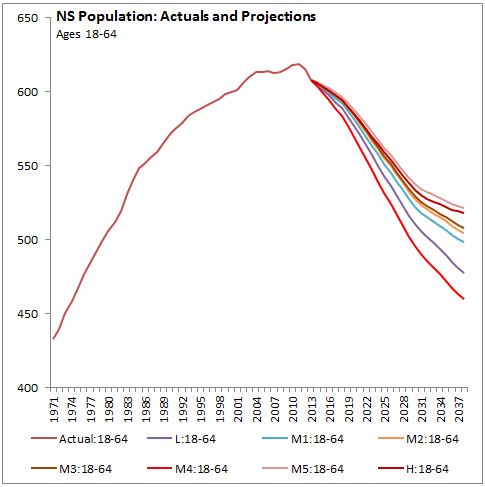
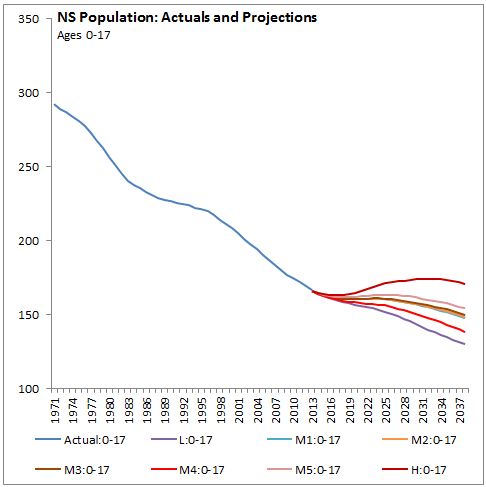

The main drivers for population growth into the future (as illustrated in the model) are immigration and interprovincial migration. Depending on the scenario, interprovincial migration can be forecast to continue along a net-negative path for the medium term. Increased immigration is an even larger contributing factor in the High Growth Scenario.
 CANADA
CANADABy the year 2038, Canada's population could reach a total population of 63.5 million persons, as projected in the High Growth scenario. The low growth scenario projects Canada's population would reach almost 40 million by that year.
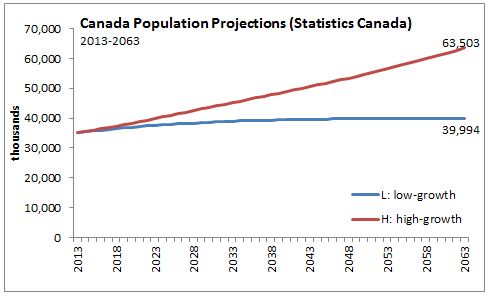 <--- Return to Archive
<--- Return to Archive